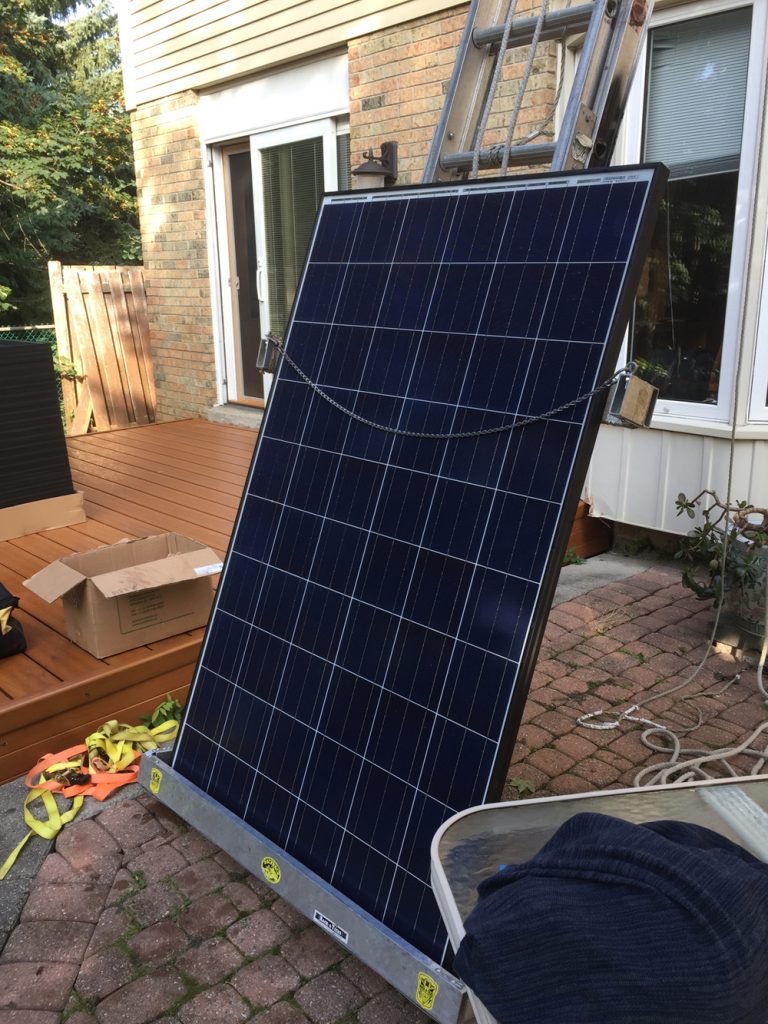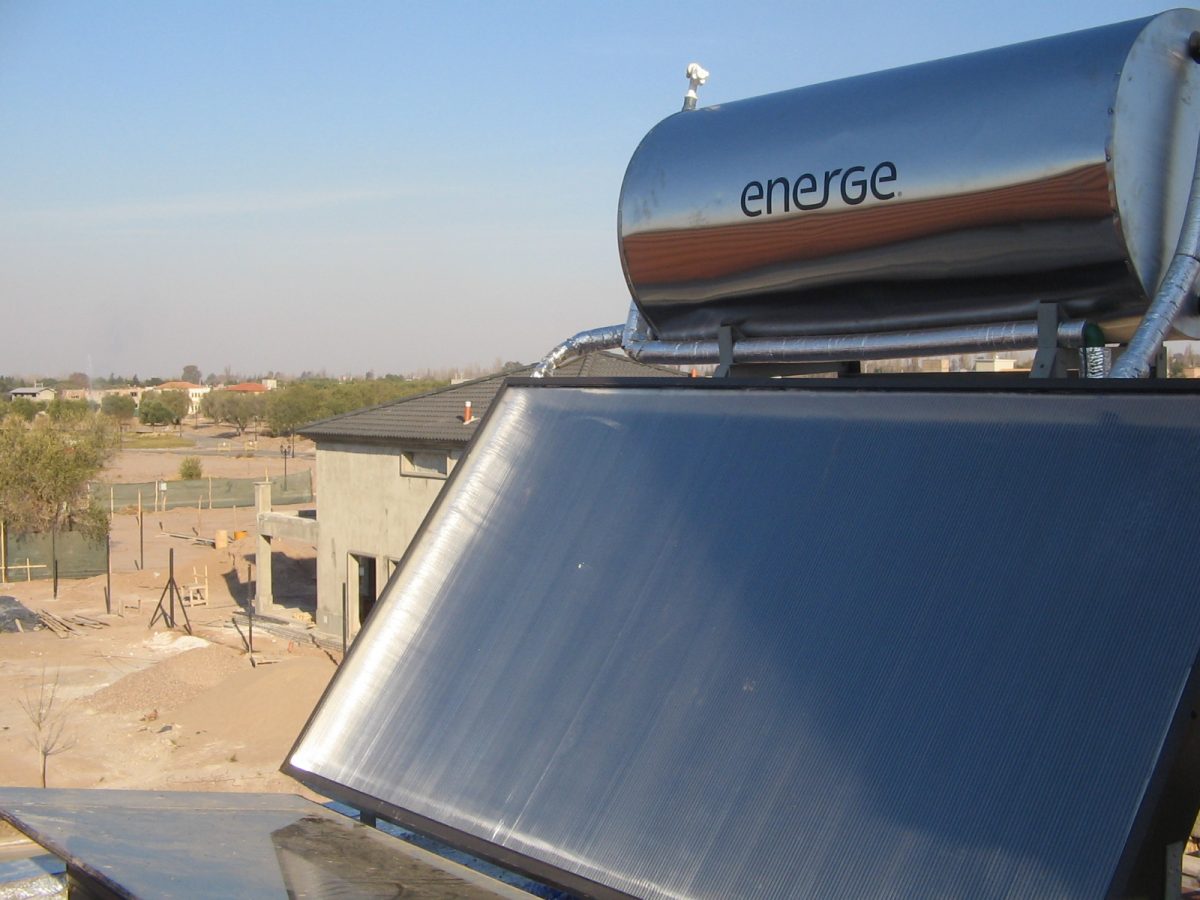Summary
– 3 types of solar water heaters
– Solar Water Heater: Understanding How It Works
– 2 types of use
Do you wish to equip your home with a water heater? The choice is mainly made according to the type of energy: electric water heater, gas water heater, solar water heater, or thermodynamic water heater.
A solar water heater can provide 70% of the hot water needs for a family of four and about 40% of heating + hot water for a year.
The solar water heater generally comes as a complement to a domestic hot water heating system.
3 types of solar water heaters
Three main types of solar water heaters:
– the solar water heater with monobloc thermosiphon;
– the separate element thermosiphon solar water heater;
– the forced circulation split element solar water heater.
Here is a table showing the different types of solar water heaters and how they work:
Solar water heater
|
Type of solar water heater |
How it works |
More information |
|---|---|---|
|
Monobloc Thermosiphon |
– The tank and the sensors are outside, and the balloon is above the sensors.
– The fluid circulates naturally, is warmed by the sensors, and goes up towards the solar storage tank.
– The cold water is heavier than the hot water and remains at the bottom of the installation.
– Once heated, the water rises upwards.
|
– To be installed in preheating the hot water system or in hot regions to generate direct hot water directly.
– This system does not require a controller and circulator.
|
|
Thermosiphon separate elements |
– Identical principle to the monobloc thermosiphon, the collectors and the balloon are separated.
– The balloon must be at least 50 cm above the collectors and placed inside, under a roof, for example.
|
|
|
Solar Water Heater in Forced Circulation Mode |
Balloon and collectors are separated, e.g., the collectors on the roof and the balloon anywhere in the house as long as they are as close as possible to the tapping points. |
The system has a regulation that starts the circulation of the fluid depending on the sensors’ temperature and the tank. |
Solar Water Heater: Understanding How It Works
A solar water heater consists of various main components with specific functions depending on the type of solar water heater.
Individual Solar Water Heater Operation: The Principle
The operating principle is based on:
– the capture of solar rays;
– the transmission of heat from these collectors to a heat transfer fluid through a primary circuit;
– the transmission of this heat to the water stored in a solar storage tank.
The circulation of the fluid can be natural or forced. An auxiliary heating system is required to compensate for insufficient sunlight. The regulation allows the water to be heated or not, depending on the temperature difference between the tank and the collectors.
Solar water heater: elements required for its operation
The following is a summary table of the main elements/functions of an individual solar water heater:
Solar water heater (solar tank)
|
Elements |
Function |
|---|---|
|
Solar collectors |
It absorbs solar rays and retains heat. |
|
Circulator and regulation |
– The controller controls the circulator (pump) that sets the heat transfer fluid in motion (which will heat the water). – Depending on the temperature, the controller cuts off the circulation. |
|
Solar tank |
It is the storage unit for hot water in a perfectly insulated tank: the hot water drawn is replaced by cold water to be heated by the heat transfer fluid. |
|
Exchanger |
– A supplemental device that compensates for insufficient sunlight. – It is connected to a boiler downstream of the tank. |
Summary of the solar water heater operating mode

|
Capturing the sun’s rays |
– The sun’s rays are captured by solar collectors, usually placed on the roof. The collectors’ glass allows the radiation to pass through and, by a greenhouse effect, retains the infrared rays emitted by the absorber (black metal plate). – Alternative system: evacuated solar tubes have a better energy yield because they are better insulated. |
|---|---|
|
Circulation of the heat-transfer fluid (which heats the water) |
The heat transfer fluid consists of water and antifreeze circulating in copper tubes: – it is this liquid that recovers the calories from the sensor; – can circulate naturally (without pump) or in forced mode (with pump). |
|
Natural mode: – Principle of thermosiphon water heaters, the heat-transfer fluid circulates according to its difference in density with the water: hotter, therefore less dense than the water in the tank, the fluid rises by thermocirculation. – The tank must be placed higher than the collectors. |
|
|
Forced mode: – Via a circulation pump, the liquid transmits energy to a heat exchanger at the tank’s bottom. – The exchanger transfers heat to the water. |
|
|
Regulation |
– The controller controls the circulator (pump) that sets the heat transfer fluid in motion. – If the temperature at the storage tank sensor is warmer than the sensors, the controller switches off the circulation. – Otherwise, the circulating pump is restarted, and the heat transfer fluid heats the water. |
|
Add-on to heat the tank |
– The sunshine is not always regular; you must provide a supplement to heat the water in the tank. – This can be a resistor placed in the tank or an exchanger connected to a boiler (wood, oil, or gas) located downstream of the tank. – You can use a heat pump for the make-up. |
|
Water storage |
– The water is stored in a perfectly insulated solar storage tank with a metal tank. – The hot water drawn from the tank is replaced in equal quantities by cold water and immediately heated by the heat transfer fluid through the circuit. |
2 types of use
a. Direct hot water connection
A solar water heater can be used:
– directly to produce domestic hot water:
◦ for example, for an isolated dwelling little used;
◦ but only in very sunny regions;
– or for preheating, by connecting it:
◦ to a cumulus (domestic hot water tank);
◦ to a boiler to supply the heating circuit.
b. Preheating
The use of a solar water heater for preheating can significantly reduce your energy bill:
– The water enters the circuit with a temperature between 25 and 60°C depending on the season.
– When there is not enough sunlight, the heating takes over and provides the additional energy.
Hope this post has helped you understand how a solar water heater works. Please, remember to share your experience in the section below.

